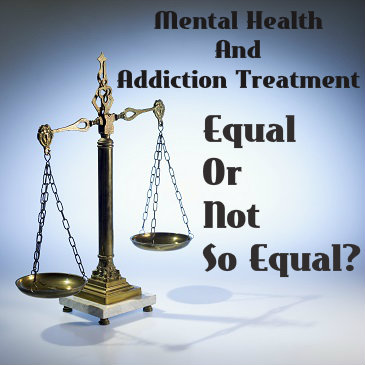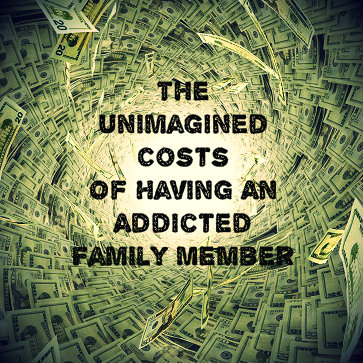29 Jul 2014
What Are The Steps Of Drug Rehab?
Going to rehab for drug addiction is a daunting challenge. You have to face up to your addiction, entrust others with your care and get ready to face the future without drugs or alcohol. With such big and scary steps to take, the last thing you need is to be afraid of what happens in drug rehab. When you know what to expect and what you are facing, the whole experience will be less frightening and you can devote your energy to healing and getting sober.
What Is The First Step In Rehab?
 The first thing you can expect to go through, no matter what kind of drug rehab you choose, is detox. If you are wondering what happens during detox, you are not alone. Many addicts find this to be the most frightening aspect of getting clean. It’s possible that the program you choose will expect you to go through detox before entering, but most offer detox services. To detox means taking the couple/few days necessary to stop using substances and wait while the last of them leave your body. You can expect to feel withdrawal symptoms during this process, including anxiety, irritability, fatigue, headaches, nausea and insomnia. However, many detox programs offer more comfortable medicated or holistic detox options.
The first thing you can expect to go through, no matter what kind of drug rehab you choose, is detox. If you are wondering what happens during detox, you are not alone. Many addicts find this to be the most frightening aspect of getting clean. It’s possible that the program you choose will expect you to go through detox before entering, but most offer detox services. To detox means taking the couple/few days necessary to stop using substances and wait while the last of them leave your body. You can expect to feel withdrawal symptoms during this process, including anxiety, irritability, fatigue, headaches, nausea and insomnia. However, many detox programs offer more comfortable medicated or holistic detox options.
What Happens During A Drug Rehab Intake?
Once you have detoxed, whether at your chosen facility or at a specialized detox center, you will go through intake at your rehab program. This involves being assessed by the professionals working in the facility, including a doctor or nurse, a therapist or psychiatrist, and other addiction specialists. You will also be expected to go through some paperwork. If you feel uncomfortable filling out and signing forms in your current state, ask if you can bring a trusted friend or family member along to help.
During this initial period you will also begin to shape your treatment plan. If you have chosen a successful drug rehab, you can expect to have a plan individualized for your specific needs. It will be based on the assessment done during your intake, as well as on your own input and should be approved by a doctor or nurse who will go over it with you. Your plan may change as you go through treatment and your needs change.
What Do You Do In Drug Rehab?
Once you have a treatment plan in hand and you have successfully detoxed, you will begin your treatment. The implementation of your treatment plan makes up the bulk of your experience in rehab. Make sure it is explained to you in advance, and don’t hesitate to ask questions about it so that you know what to expect. You will likely participate in daily counseling sessions. Some will be with just you and your therapist, while others will be group sessions in which you will be asked to open up with your fellow addicts in recovery.
You may also engage in recreational activities and educational workshops. These will be strictly scheduled so that you are always doing something and so that your downtime is kept to a minimum. This does not mean that you will never be alone or allowed to reflect, just that your time in rehab will be busy and engaging.
Direction For Your Continuing Recovery
Finally, as your time in rehab is nearing an end, you can expect to work with your therapist or other experts at the rehab facility to plan your future. The caring professionals with whom you have been working will not simply send you out the door hoping for the best. They will help guide you toward a future that is full of life and free of addiction.
IF YOU OR YOUR LOVED ONE IS STRUGGLING WITH ADDICTION AND
NEED HELP FINDING A REHAB FACILITY, CALL US NOW!
12 May 2014
Is Addiction Coverage Really Equal?
In recent years, two federal laws have guaranteed fair and equal coverage for mental health and addiction treatment. Those working in the field of addiction care are not so sure that the intent of those laws is really playing out in reality. People struggling with substance use disorders may not be getting the insurance coverage they need in order to get well.
The Federal Laws
In 2008, President Bush signed the Mental Health Parity and Addiction Equity Act. The law is supposed to ensure that health insurance plans are no more restrictive when it comes to mental health or addiction care than they are with other types of medical care. In other words, deductibles, co-pays and limits on treatment cannot be greater for mental health or addiction than anything else in the plan. The law does not require that plans cover these types of care at all.
President Obama’s Affordable Care Act added to the previous law by listing mental health and addiction treatment as essential benefits that must be covered by all health insurance plans, including those offered by small businesses and those for individuals. Prior to this law, most large company group plans included such coverage, but smaller plans often did not.
Equal Coverage Not So Equal
 The two laws signed by Presidents Bush and Obama were intended to make sure that people needing care for mental health issues or for addiction would get the treatment they need. One of the biggest barriers to getting treatment has always been cost. If an insurance plan does not cover treatment, or if the restrictions on treatment are significant, someone who needs help may not get it. Those who are in the field of treatment for addiction are finding that the laws’ intentions are not always playing out as intended.
The two laws signed by Presidents Bush and Obama were intended to make sure that people needing care for mental health issues or for addiction would get the treatment they need. One of the biggest barriers to getting treatment has always been cost. If an insurance plan does not cover treatment, or if the restrictions on treatment are significant, someone who needs help may not get it. Those who are in the field of treatment for addiction are finding that the laws’ intentions are not always playing out as intended.
The National Association of Addiction Treatment Professionals conducts ongoing surveys and has reported that there are many denials of coverage for addiction care. Behind more than half of those denials is a debate over what is medically necessary. Unlike other medical conditions, like heart disease for instance, medical necessity for addiction is not always perfectly clear. The insurance plans need not cover care that is not deemed medically needed. Caregivers cite the changing laws as the reason insurers are getting tougher about what they will and will not cover.
One of the biggest battles over care for addicts is the number of days of coverage for residential stays. Many insurers want to cap the stay at a week or less, while addiction experts insist that patients need up to three months of treatment. Some insurers insist that treatment need not be inpatient care and that they will cover a few months of outpatient care. What is right for each patient, though, is highly individualized. Some may succeed with outpatient treatment, while others have nowhere safe to go and really need a long stay in a residential facility.
The changing laws regarding care for addiction and mental health represent an important societal shift in attitudes toward those struggling with these very real medical conditions. The shift is positive and the laws help, but there are still many bugs to work out. As insurers debate how to implement coverage that meets the requirements of the laws, addiction caregivers try to pick up the slack. It may take more time to ensure that everyone gets the help they need, but the changes so far are just not enough to reach everyone.
GHB is the common shorthand for gamma hydroxybutyrate, a drug of abuse identified as both a “club drug” and a “date rape” drug. People who use this drug repeatedly over time can develop a severe form of drug withdrawal that has the potential to produce fatal results. In a study published in February 2014 in the journal Drug and Alcohol Dependence, a team of Dutch researchers investigated the best options for treating individuals affected by GHB withdrawal. These researchers concluded that the appropriate option varies according to any given person’s level of involvement with GHB use.
What Is GHB?
 GHB occurs naturally inside the human brain, but only in small amounts. Trace amounts of the chemical also appear in certain types of wine and beer. A specific form of pharmaceutical GHB, called sodium oxybate (Xyrem), has legitimate medical use as a treatment for the sleep disorder narcolepsy. However, access to this medication is strictly controlled through federal law, and most people who use/abuse GHB recreationally rely on illegally produced batches made by clandestine drug manufacturers.
GHB occurs naturally inside the human brain, but only in small amounts. Trace amounts of the chemical also appear in certain types of wine and beer. A specific form of pharmaceutical GHB, called sodium oxybate (Xyrem), has legitimate medical use as a treatment for the sleep disorder narcolepsy. However, access to this medication is strictly controlled through federal law, and most people who use/abuse GHB recreationally rely on illegally produced batches made by clandestine drug manufacturers.
GHB alters normal brain and body function by reducing the rate of communication inside the central nervous system. The baseline effects of this reduction include both sedation and a form of euphoric intoxication. In addition, roughly two-thirds of all users of the drug lose consciousness. The euphoric and sedating effects of GHB largely account for its use as a club drug. The sedating and unconsciousness-producing effects of GHB largely account for its use as a date rape drug; its use as a date rape drug also stems from its ability to trigger amnesia. Other known potential effects of GHB use include hallucinations, nausea, vomiting, confusion, headaches and loss of body control. People who overdose on the drug can develop seizures, experience a dangerous decline in normal lung function, go into a coma or die.
Addiction To GHB And Withdrawal From It
When used repeatedly over time, GHB can trigger the long-term changes in brain function required to produce substance addiction. One of the classic signs of any form of drug or alcohol addiction is the onset of withdrawal symptoms when substance use ends or tapers off rapidly. In the case of GHB addiction, potential withdrawal symptoms include excessive sweat production, a highly anxious mental state, uncontrollable body tremors and sleeplessness. Some people develop severe forms of these symptoms that can lead to highly debilitating or even fatal changes in brain and body health.
What Is The Withdrawal Treatment Setting?
In the study published in Drug and Alcohol Dependence, researchers from three Dutch institutions sought to establish guidelines for the best way to address the effects of GHB withdrawal. They undertook this work because, despite the potentially severe nature of this withdrawal, some individuals may recover well in an outpatient setting rather than in a hospital. The researchers began the project by gathering case studies of patients going through GHB withdrawal from 40 professionals specializing in addiction medicine. These case studies were reviewed by another 15 addiction specialists who made recommendations for hospitalization or outpatient care for each patient under consideration. In the study’s third and final stage, five specialists with extensive experience in treating GHB withdrawal reviewed the rationale used for assigning any given patient to hospitalization or outpatient treatment.
All told, 20 patients going through GHB withdrawal were assessed and/or reviewed by the three groups of experts. The researchers concluded that two main factors account for the decision to either hospitalize a person going through withdrawal or recommend outpatient treatment: the amount of GHB used each day and the frequency of GHB intake. As a rule, patients who take 32 grams or more of the drug every day and use the drug at least every two hours require hospitalization when going through withdrawal. Patients who take smaller daily amounts of the drug and use the drug less than every two hours are potential candidates for outpatient withdrawal treatment.
The authors of the study published in Drug and Alcohol Dependence note that people with diagnosable psychiatric problems who go through GHB withdrawal may also require hospitalization rather than outpatient care. Conversely, people with strong support networks have an increased chance of receiving outpatient treatment when going through withdrawal. The authors believe that, overall, their work provides a solid framework that doctors can use when determining the best treatment setting for a person withdrawing from GHB use.
What words can describe how a parent feels watching their child attempt to cover life’s pain with substances? When a child has a full-blown addiction, there can be significant financial costs on top of the emotional ones. One book which attempts to relate the family pain of substance abuse also talks about the strain placed on the family budget when addiction takes over.
An Addict’s Desperate And Drastic Steps
David Sheff’s Beautiful Boy recounts his son’s downward spiral with tales of missing credit cards, missing household items, missing checks and even missing coins from a sibling’s piggy bank. Addicts need their substance and they will do nearly anything to stay supplied. In this case, when the child left home and contacted mom and dad asking for more money, the desperate parents sent it.
If the addicted family member is a spouse, the financial dangers can become even greater. Joint bank accounts need to be watched carefully. The person may try to open a new line of credit in order to lay their hands on ready cash. In some cases, addicts have been known to frequent payday advance lending businesses.
What The Family Of An Addict Can Change
When this is the situation, the sober partner may need to take some more drastic steps. Names may need to be changed on bank accounts to protect savings. In extreme cases it may be necessary to establish a trust to safeguard the home and other major assets. The addiction can cost families inordinate amounts of capital, even when someone is maintaining vigilance. The drain can be devastating when fear is the only decision-maker.
When the child or spouse is at last ready to make a change, the costs for rehabilitation are not miniscule. As Sheff points out, money needs to be intentionally protected and then well-directed. Simply handing out money to a child not at home and on drugs isn’t always the best decision. However, investing in recovery is worth every penny.
Parents and spouses will need to make some very tough decisions about where to draw the financial line because addiction is costly. Often it will be helpful to talk with a mental health professional when making those kinds of decisions. They can offer dispassionate insight into whether it’s time for tough love or something else. When you’re in the middle of the situation, the overwhelming emotions can make it hard to reason wisely.
Finding Guidance When Dealing With The Addiction Of A Loved One
A biographical account cannot fully express what a family goes through when a member becomes addicted to alcohol or drugs, but it can lay out some of the potential landmines. Parents of children with addiction can learn from the mistakes of others. Get help when deciding how to support your loved one dependent on substances. There is a right time to close the billfold and a right time to open it again.
Read More To Find Out If You’re Enabling The Addict In Your Life And Break Free From The Cycle Of Broken Promises!
Healthcare treatment is often completely separated between those that are seeking mental health, substance abuse and medical health treatment. Communities have recently been integrating all of this patient care in one facility. For patients this means better care management as they are treated fully for all their needs with a network of health providers who can work together in helping the patient heal both mentally and physically, possibly including chronic pain management care.
Mental And Physical Health Connections
Research studies are more commonly finding links between mental and physical health.
Medical Ailments May Induce:
- Depression
- Anxiety
- Other mental illnesses
Mental Disorders May Conversely Affect A Person’s Ability To:
- Eat properly
- Exercise
- Take care of their physical health
A study by researchers at the George Washington University School of Public Health and Health Services (SPHHS) looked at the effects of integrating medical health with mental health, and is the first to study the integration of substance abuse treatment with medical health.
Doctors Need To Treat Both The Body And Mind For Best Recovery And Long-Term Management
 As doctors learn more about the mind-body connections, they see the need to treat both the patient’s body and mind in order for the best recovery and life-long management. The research team at SPHHS reported that many community health centers, for example, were providing mental health treatment. Leighton Ku, PhD, MPH, Professor of Health Policy and Director of the SPHHS Center for Health Policy Research, asserts that these centers are leading the way in redefining primary health care to include both mental and medical treatments. Mental Health Treatment Centers have also moved towards treating the individual as a whole, both mentally and physically.
As doctors learn more about the mind-body connections, they see the need to treat both the patient’s body and mind in order for the best recovery and life-long management. The research team at SPHHS reported that many community health centers, for example, were providing mental health treatment. Leighton Ku, PhD, MPH, Professor of Health Policy and Director of the SPHHS Center for Health Policy Research, asserts that these centers are leading the way in redefining primary health care to include both mental and medical treatments. Mental Health Treatment Centers have also moved towards treating the individual as a whole, both mentally and physically.
The SPHHS study reported that the larger the size of the center the more likely it was to offer mental health services. Also, if there were more psychologists and psychiatrists in the area they were better able to offer behavioral health services.
Available Substance Abuse Care – Crucial For Overall Recovery
While more community health centers are offering mental health care, the study revealed that not as many centers are offering substance abuse care or crisis counseling. These centers are missing an integral part of the treatment process that is important for the overall recovery of their patients. Many larger professional treatment centers can offer the substance abuse care and crisis counseling that is needed by those struggling also with mental health conditions. This is an important part of long-term recovery.
Because of billing complications community health centers in some states are not as likely to offer substance abuse treatment or 24-hour crisis counseling. Drug and alcohol abuse most certainly affects the body, both mentally and physically. Treatment of one without the other can affect the results of treatment for the individual.
The lead author of the SPHHS study, Emily Jones, PhD, MPP, believes that if more people can be provided drug and alcohol abuse treatment – at any hour when they desperately need crisis counseling – the patient will have a better chance at recovery. Dr. Jones originally started this study and now works for the Office of the National Coordinator for Health Information Technology at the U.S. Department of Health and Human Services.
Complete Healing In Health Care
Complete healing happens when both body and mind are free of pain and suffering. Researchers like Jones find hope for integrating services as other research studies are finding multiple links between physical illnesses and mental illnesses. As doctors, psychiatrists, psychologists and substance abuse treatment professionals combine their forces in health care, more patients will find healing and the recovery process will be improved as it meets the needs of each patient on a more comprehensive level.
Read More About Mental Health And Drug Abuse Care
Narcissism is a term psychologists and psychiatrists use to describe the combined presence of personality traits such as self-absorption, grandiosity, and an unrealistic sense of personal importance. Some aspects of narcissism can play a healthy role in a person’s life, while other aspects tend to produce social and interpersonal problems. In their worst form, narcissistic traits can manifest as a diagnosable mental health condition called narcissistic personality disorder. According to the results of a multi-university study published in 2012 in the journal PLOS ONE, narcissism produces significantly more negative health effects in men than it produces it women.
Narcissism Basics
Most psychologists and psychiatrists agree that a limited amount of narcissism can play a positive role in a person’s everyday life, both during the developmental stages of childhood and later on during adulthood. Experts in the field sometimes refer to this positive influence as adaptive narcissism. People who engage in adaptive narcissism can receive such benefits as an increased tendency to exercise, improved academic performance, an improved rate of recovery in the aftermath of a traumatic injury, improved or broadened employment opportunities, self-sufficiency in intimate relationships and improved parenting skills.
While adaptive narcissism can be beneficial on both a personal and social level, unlimited or maladaptive narcissism can have the opposite effect. Tendencies associated with unhealthy narcissism include an inability to hear the concerns of others, lack of empathy for others, an inability or unwillingness to take responsibility for one’s actions, an inability or unwillingness to take responsibility for one’s emotional states, and an unusual sensitivity to real or perceived criticism. The authors of the study in PLOS ONE break narcissism down into five personality traits, three of which tend to produce healthy narcissism and two of which tend to produce unhealthy narcissism. The three traits associated with healthy narcissism are self-absorption/self-admiration, leadership/authority and superiority/arrogance. The three traits associated with unhealthy narcissism are entitlement and exploitativeness.
Narcissism in Men
After reviewing their results, the authors of the study concluded that men and women with high scores for healthy or adaptive narcissism don’t experience significant increases in their cortisol levels. This finding indicates that adaptive narcissism does not produce stress. However, men with high scores for unhealthy narcissism do experience significant cortisol increases, and therefore experience substantial increases in their stress levels. In line with this finding, the highest levels of cortisol elevation occur in men who have the highest level of involvement in unhealthy narcissism. Interestingly, women with high levels of unhealthy narcissism experience less than half of the cortisol elevation that occurs in their male counterparts.In the study published in PLOS ONE, researchers from the University of Michigan and the University of Virginia used a 40-question questionnaire to determine the narcissism levels in a group of 106 adult undergraduate students. They also used saliva tests to check these students’ levels of a substance called cortisol. Cortisol is the body’s most important stress hormone, and when its level in the body increases, affected individuals experience mental symptoms of stress such as fear and anxiety, as well as a variety of physical stress-related effects.
Significance
Chronic stress is associated with increased risks for such things as depression, memory problems, sleep disturbances, obesity and heart disease. The men and women who participated in the study published in PLOS ONE did not undergo any stress-increasing experiments before having their cortisol levels checked. Instead, their cortisol levels reflected the amounts of stress they experience during everyday life. The authors of the study believe that this fact indicates that men with unhealthy forms of narcissism are regularly exposed to unique risks to their mental and physical well-being.
Social stereotyping may help explain the negative impact of unhealthy narcissism in men, the authors of the study note. For example, many of the common social definitions for “manliness” coincide with the personality traits of narcissism. If any given man with generally healthy narcissistic traits tries to live out the social expectations for males, he will probably not suffer any major negative consequences. However, if a man with generally unhealthy narcissistic traits tries to live out the same set of expectations, he can reinforce his damaging narcissistic behaviors and end up dangerously boosting his stress levels. As plausible as this sounds, it’s currently just a theory. Researchers will need to make additional studies before they can truly explain why unhealthy narcissism has such a strong impact on men.
16 Mar 2013
Austin Drug Rehab and Treatment
Drug use in Austin, Texas and around the United States is a rising problem. More and more people, especially young people, are experimenting with drugs, in particular prescription painkillers and marijuana. Often those who are using these drugs assume that they are not dangerous in the way that illegal narcotics like cocaine or heroin are. They are mistaken, however, and using these substances can lead to health problems, addiction, and even overdose and death in extreme situations. Although abuse and addiction are on the rise, there are ways to get help. If you are living in Austin with a drug problem, there are places you can go and professionals to whom you can turn to get help coming clean.
Read More
Whether you’re weary of doctor-shopping to support a prescription drug habit or worried your frequent alcohol use will cause you to lose custody of your kids, it’s becoming clear that you need treatment. But is Christian drug rehab the right choice for your path to recovery? It’s easy to disregard the possibility of a Christ-centered rehabilitation facility if you practice another faith or have no belief system at all. However, this type of rehab often has unique advantages over secular-based programs. Following are some of the best reasons to seriously consider a Christian-based treatment facility, regardless of your own beliefs:



